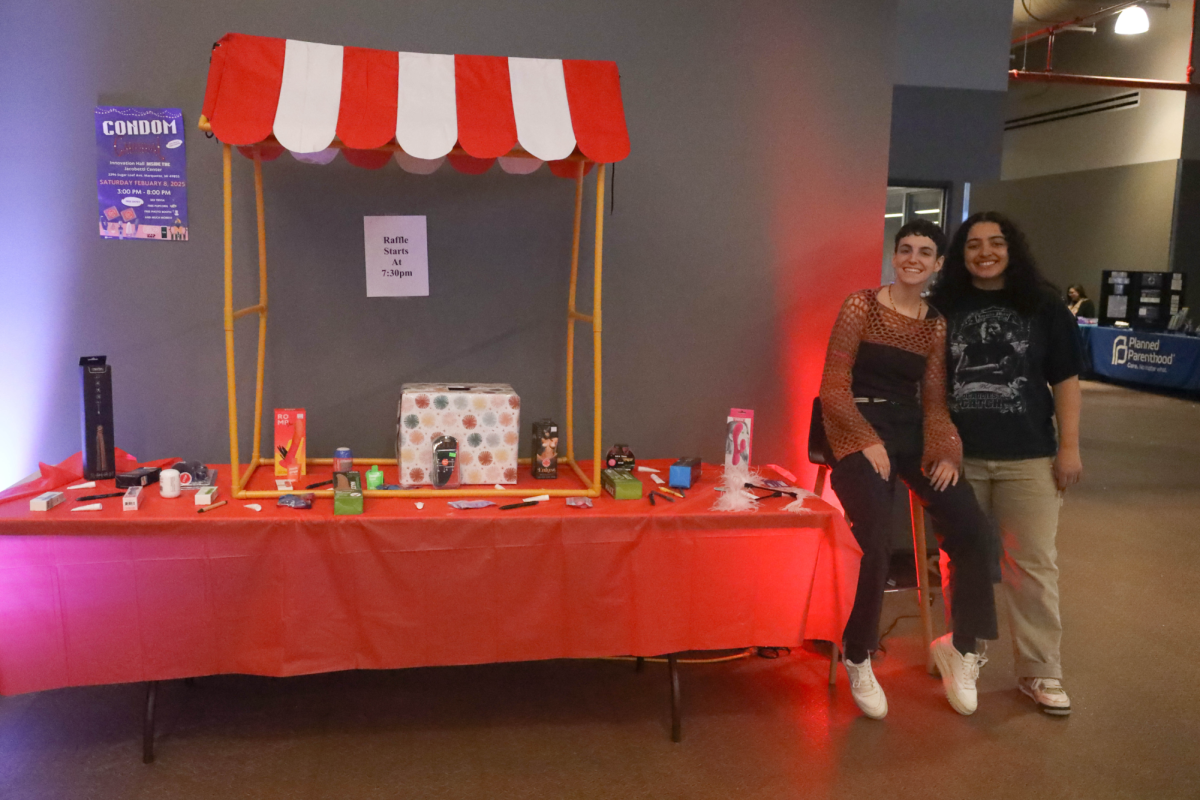In Saturday’s Senior Day win against Michigan Tech for the women’s soccer team, freshman Ashley Nichols received a bone bruise on her hip after a collision with a Husky midfielder while going for a header. Nichols received a foul for falling into the Tech player, and deserved it, but what bothered me is what put her in that position.
The way she set up to take the hit from the Tech player made it look like she was preparing to be hit by a bus. Nichols lowered down so far that when the opposing player made a legit jump for the header, Nichols just fell over. Maybe if more teams in the GLIAC played cleaner like Tech, freshmen wouldn’t think they had to be ready for such bone-crushing illegal hits, like when NMU played Findlay earlier this year and the Oilers jumped at 45 degree angles for headers.
Or the refs could start doing their job.
As a whole, the GLIAC is not officiated with any kind of authority. It amazes me how many times a player can be warned not to break the same rule and nothing is done about. A player should receive a yellow card after persistent infringement of the rules, but it is rare that one is given. In fact, only five have been given against NMU opponents this year, but a simple review of game tape shows multiple warnings given to opposing players, like in games against Findlay and Tiffin.
The amount of illegal jumps for headers, use of hands and arms and straight up body checks in the GLIAC is insane. These dangerous techniques have been used in conference play for the four years I’ve followed Northern soccer. You see the same dirty, overly-physical play in conference play, and it has become a huge stain in the reputation of the Great Lakes Intercollegiate Athletic Conference.
The conference has a supervisor of soccer officials, Kim Vieira, who has held the position for one year.
The refs have to start regaining control of each and every game instead of this passive, reactionary call style. As a whole, GLIAC refs have rewarded teams for making the first illegal move by not calling fouls like pulling on the jerseys, getting physical off the ball and shoving in the back. Then when players stand up for themselves by returning the shoves, because the refs aren’t going to, they get called for the fouls. This philosophy is shown with teams like Ferris State, who leads the GLIAC with 229 fouls and 12 yellow cards this year. However, the Bulldogs are known by reputation to be just as clean as NMU (tied for least amount of fouls per game) and Michigan Tech (lowest amount of yellow cards in the GLIAC).
This officials’ philosophy is destroying clean play in the GLIAC. SVSU and Tiffin are known throughout the Midwest as being dirty teams, and it has paid handsomely for these schools. After seeing the mercenaries and convicts –– I mean Cardinals and Dragons –– make multiple NCAA and GLIAC tournament appearances, other teams like Northwood and Findlay have started to play rougher. Teams like Ashland, Lake Erie and Tech have paid the price for staying clean by losing.
Understanding the rules would also be a step in the right direction for GLIAC officials. In Sept. 17 draw with Ferris State, two advantages were given to FSU after NMU fouled them in the box. Instead of awarding the Bulldogs with a penalty kick, the referee exercised NCAA rule 5.3.3 and gave the Ferris player an advantage and allowed play to continue. If the ref actually understood soccer, the advantage would be to give FSU a penalty kick, where the scoring chance would have been better.
Watching fans and players from Northern Sun Intercollegiate Conference schools be legitimately concerned about the health of their players because they’re not used to the physical contact or seeing any player carted off the field because of injury shouldn’t happen. The refs could do something about it.
The future of soccer in the GLIAC is headed to a very barbaric place by rewarding the wrong kind of play. Vieira, I’m asking you to reintroduce the integrity of the game to the conference. Watch the game tapes and fire the 95 percent of clueless refs for this conference. With this effort, GLIAC teams can go back to using talent, skill, coaching and determination to win games instead of beating each other to a pulp.

























